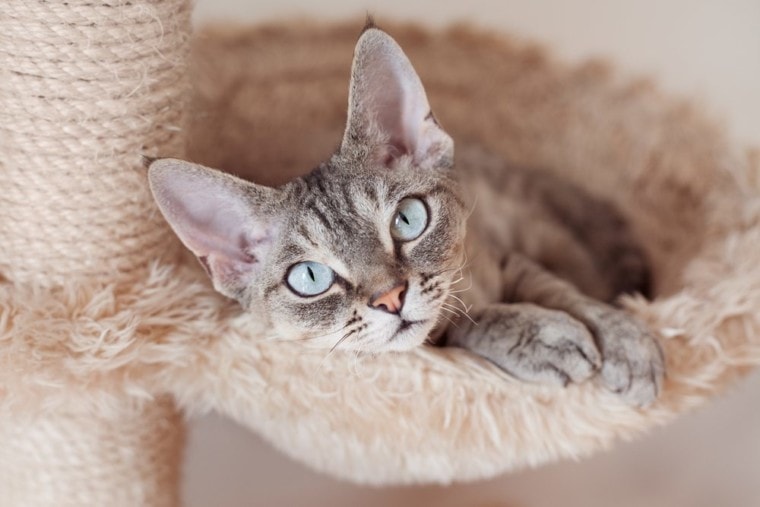
Although there is no such thing as a truly hypoallergenic cat breed, there are breeds that are considered less allergenic. Some breeds shed less fur while some have little to no fur to shed. Others produce less saliva or sweat, both of which contain the Fel d1 protein that is known to cause allergic reactions in allergy sufferers.
Below are 15 cat breeds that can minimize the instances and reduce the severity of any allergic reactions you might suffer from.
The 15 Best Cat Breeds for Allergy Sufferers
1. Russian Blue Cat
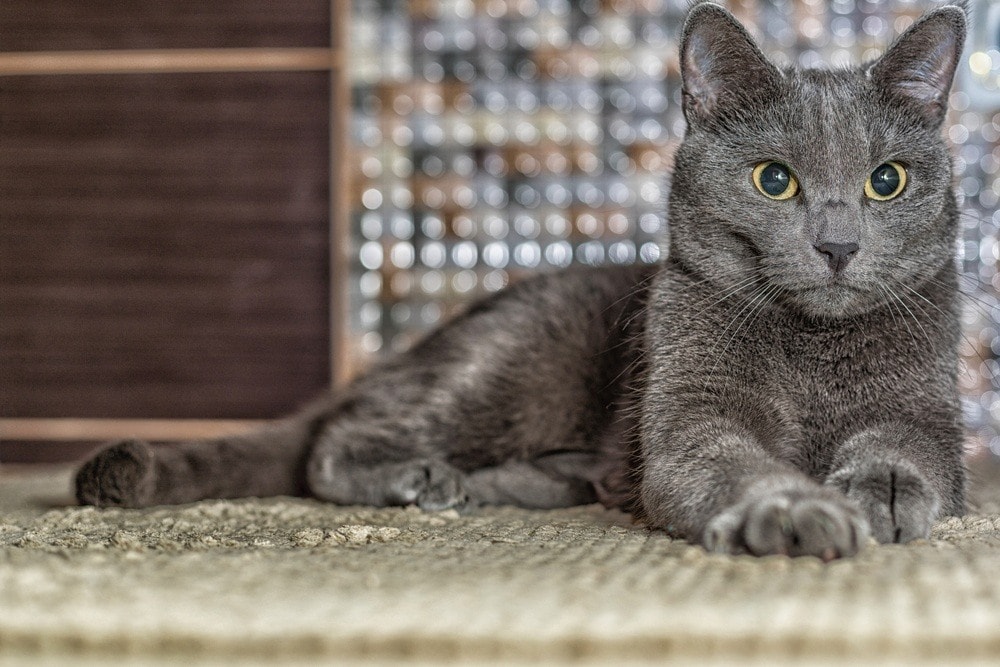
The Russian Blue is a loving and loyal cat. It will usually follow its owner all around the house and has a very dense double coat.
This double coat means that the cat feels soft like a teddy bear, but the Russian Blue has a double whammy of hypoallergenic secrets. First, this breed sheds minimally when compared to others. Second, it produces less of the protein Fel d1 that is known to cause reactions in allergic owners. The fact that the breed sheds less is also great news for those that don’t enjoy grabbing the Hoover every day.
2. Balinese Cat

The Balinese is essentially a long-haired Siamese and came about as the result of a genetic mutation from the purebred Siamese. The resulting breed is affectionate, loving, loyal, energetic, intelligent, and very vocal. It also has a single coat of hair and does not shed as often as other breeds.
The breed does not have any Balinese heritage or history, but breeders thought that the long-haired cats had a similar level of grace to Balinese temple dancers. The first Balinese appeared accidentally in the 1940s and was intentionally bred in the 1950s before gaining recognition in 1961.
3. Sphynx Cat
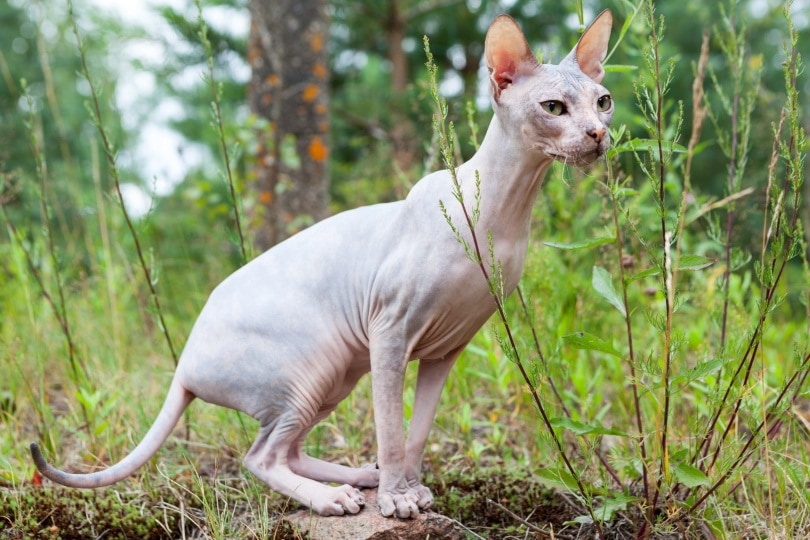
The Sphynx cat is well-known for its lack of hair. In the case of the Sphynx, lack of hair increases the breed’s hypoallergenic features. However, this isn’t always a hard and fast rule, as it is not the actual fur that allergy sufferers react to, but the glycoprotein that is found in saliva and sweat, Fel d1.
The first Sphynx was born in 1966, in Canada, as a hairless kitten to a standard domestic mother. The resulting breed does take a lot of care, including the regular oiling of its skin, but it repays that effort with lots of love and attention, getting along with all family members.
4. Cornish Rex Cat
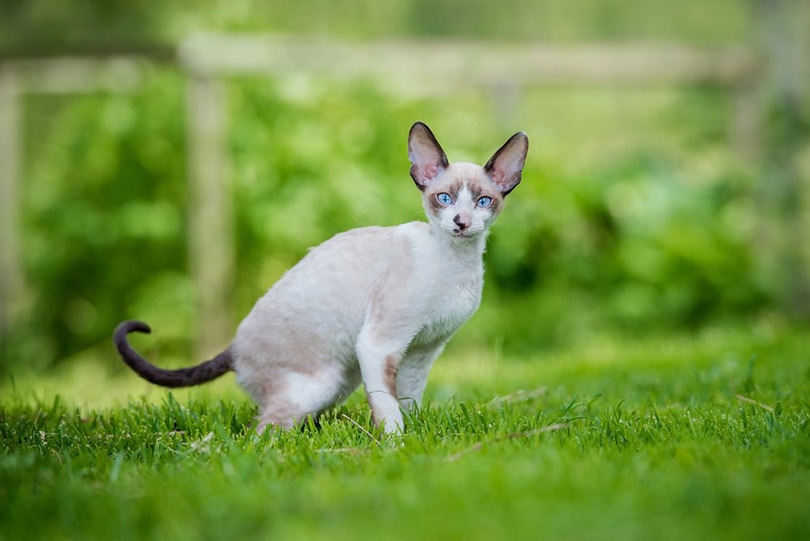
The Cornish Rex has a unique-looking curly coat. This is because it only features the undercoat layer and does not have the single or double coat that other feline breeds boast. Because it only has a single layer of fur, the Cornish Rex does not shed as heavily or as often.
The Rex is a loyal cat and will spend a lot of its time with you. In fact, if you don’t make time for your Cornish Rex, it can become quite demanding. It is an energetic pet and will even learn to walk on a leash.
5. Devon Rex Cat
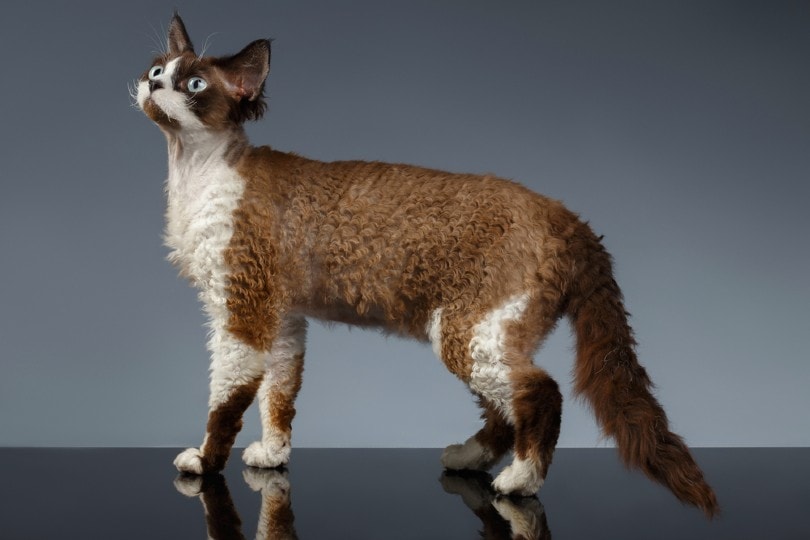
The Devon Rex also has the same mutated gene, which gives the breeds the identifier of Rex, same as the Cornish. It has brittle fur that breaks easily and this continues in the whiskers, which do tend to be broken. Grooming this cat is not advised because you can cause additional damage to the weak fur.
The Devon Rex may have bald areas, and because it has so little fur, it does not tend to shed and will not leave much fur when it does. The Devon is an active cat and will appreciate interactive play. It also enjoys attention.
6. LaPerm Cat

Finishing off the trio of curly-haired cats is the LaPerm. This French breed is so-called because of its curly, permed haircut. The fur can appear and feel almost woolen in nature, thanks to its thick curls that feel like hair.
The LaPerm sheds very lightly but it does require some maintenance including regular brushing. The long-haired variant of the breed requires more frequent brushing and extra attention to continue to look its best.
7. Javanese Cat

The Javanese is another long-haired Siamese breed, and many consider it to actually be a variant of the Balinese breed. It only has a top layer of coat, rather than the three layers that a cat usually has, and this results in less shedding and fewer errant hairs.
As a Siamese breed, you can expect the Javanese to be very affectionate with and close to their human family. It will shadow you around the house as you work and it may quietly vocalize its feelings. This affectionate breed will happily sit on your lap, share your bed, and cuddle up with you at night.
8. Siberian Cat
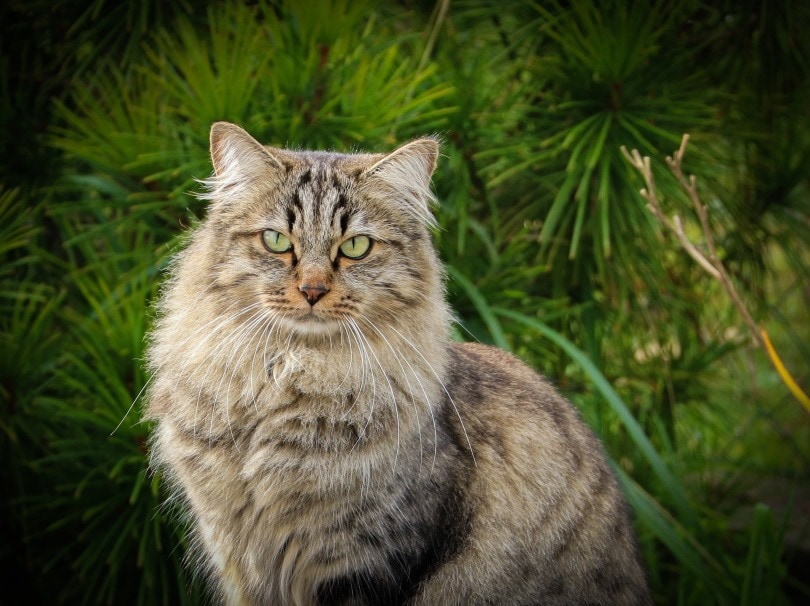
The Siberian is also known as the Siberian Forest Cat or Moscow Semi-Longhair. Other than the cat’s place of origin, not much more is known about the origin of the breed.
They have very thick coats that help them deal with the cold and mountainous regions of Siberia. For these reasons, they also find it difficult to give up that protection and they shed less than other cats as a result, making them suitable for allergy sufferers. They also produce less Fel d1 than other breeds. They are hardy, tough, and they love spending time outdoors.
9. Oriental Shorthair Cat
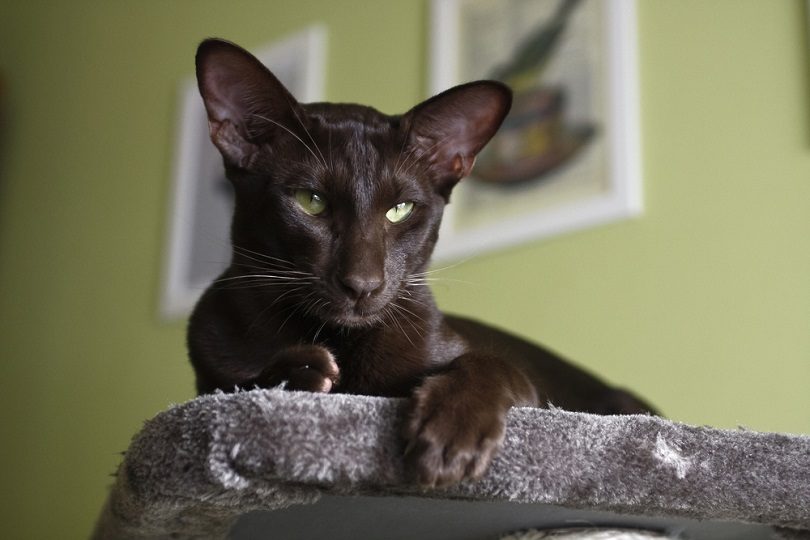
The Oriental Shorthair is just a Siamese with a different coat. During the 1920s, British breeders wanted some way to differentiate between Siamese with color points and those with block colors. The Foreign Shorthair name was given to those of solid color, and the breed later became known as the Oriental Shorthair.
The Oriental is a beautiful cat that is very intelligent. They can be trained to walk on a leash! But they can also be stubborn and they do require the same level of dedication as they lavish on you.
10. Bengal Cat
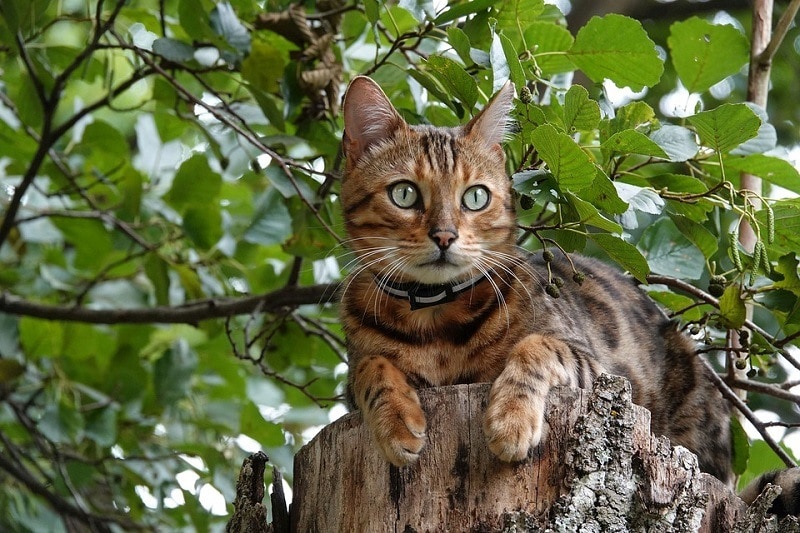
The Bengal is a large cat with a muscular body and a large tail. They originate from the US and were bred by crossing the Asian leopard cat with domestic breeds in the country. The aim was to breed a cat that looked like the Asian leopard cat but that acted as a domestic cat. The results were deemed a considerable success.
The Bengal is a domestic cat through and through. They are affectionate with families but may take careful introduction to children. They are very energetic and you will need to keep them active to avoid boredom and behavioral problems.
11. Siamese Cat

The Siamese is instantly recognizable and is considered a highly elegant cat. The breed was originally the temple cat of the King of Siam and, according to owners, they have never forgotten their regal status. Their appearance is protected, although some other popular breeds have been created from slightly different-looking Siamese or those with unique mutations.
The Siamese is beautiful and intelligent, can be taught to walk on a leash, and does require considerable attention from the owner.
12. Ocicat
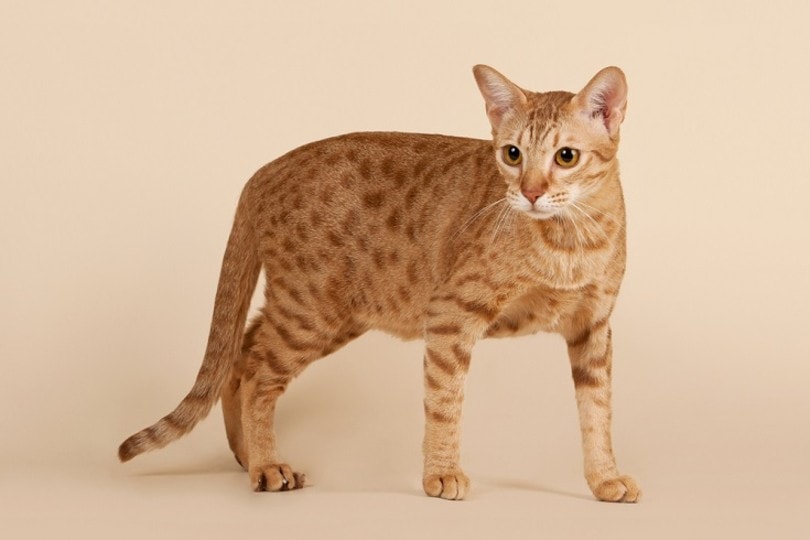
Bred in the USA in the 1960s, the Ocicat may appear to be wild but was bred from Abyssinian and Siamese domestic cats. The appearance of the resulting breed gave rise to the name Ocicat because its coat looks so much like that of a wild ocelot.
The Ocicat is strong and athletic and is considered an outdoor cat with a high-energy drive. It requires weekly grooming and is sociable and dependable.
13. Colorpoint Shorthair Cat

The Colorpoint Shorthair is yet another offspring of the Siamese breed. It was created by breeding the Siamese with Abyssinians and Domestic Shorthairs. The breed is not recognized by all associations but is becoming increasingly popular.
The Shorthair is very active and requires a lot of exercise to help burn off pent-up energy. It is also an intelligent breed that benefits from interactive play and activities to keep it busy. If you want a quiet cat, look elsewhere, because the Colorpoint Shorthair will want long and involved discussions on every topic.
14. Burmese Cat
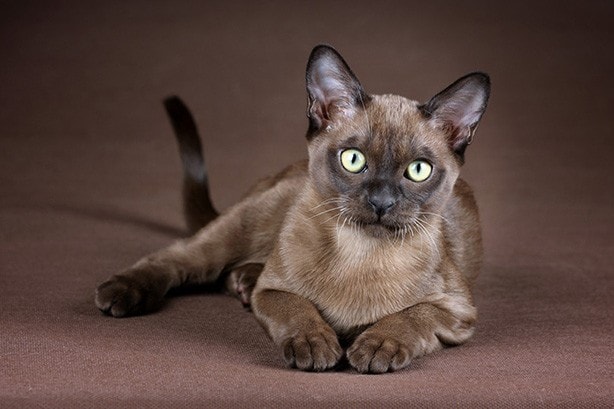
Originating from Burma, hence its name, the Burmese was first introduced to the US in the 1930s. Some believed the Burmese to be a very dark Siamese but others believe it was a distinct breed of its own. Several fanciers bred the original cat, called Wong Mau, to determine its breed. Ultimately it was determined that the Burmese is a cross between the Siamese and a dark-coated domestic breed.
The Burmese is, therefore, similar to the Siamese in a lot of ways. It is lively, energetic, and curious, and the Burmese is another breed that can be very vocal and loud.
15. Munchkin
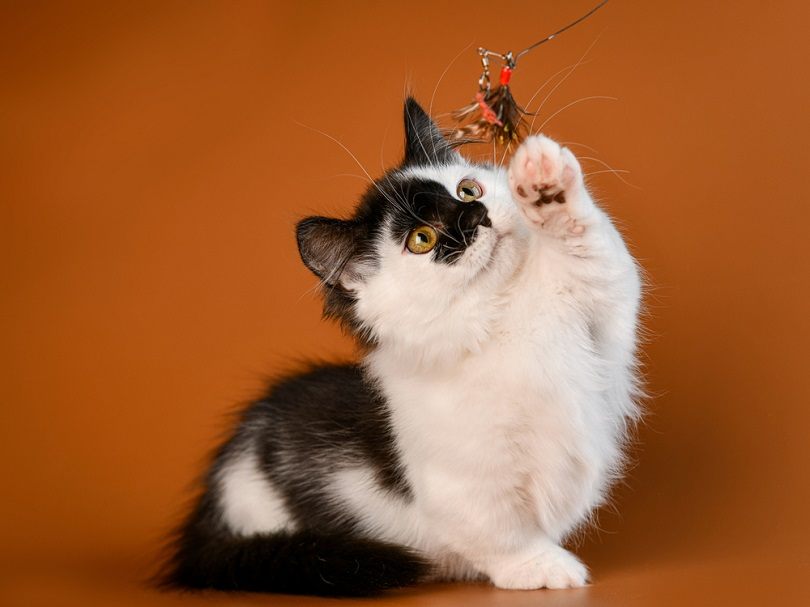
The Munchkin is a short cat with stunted legs and is considered a controversial breed, because it is bred to have intentionally short legs and can suffer from any of several illnesses and conditions specific to the breed as a result.
The Munchkin is a playful cat that thrives with love and attention. They are surprisingly athletic but it will take this breed some time to get to high perches because of his shorter legs.

Conclusion
Above are 15 cat breeds that are often referred to as being hypoallergenic. While all cats give off some Fel d1 protein that is the reaction-causing allergen, some breeds shed less and produce less of the protein, and therefore cause less of an allergic reaction. Six of the 15 on this list are Siamese-descended breeds, showing that this is a good breed from which to start your search.
- See also: Are Abyssinian Cats Hypoallergenic?
Featured Image Credit: Veera, Shutterstock





